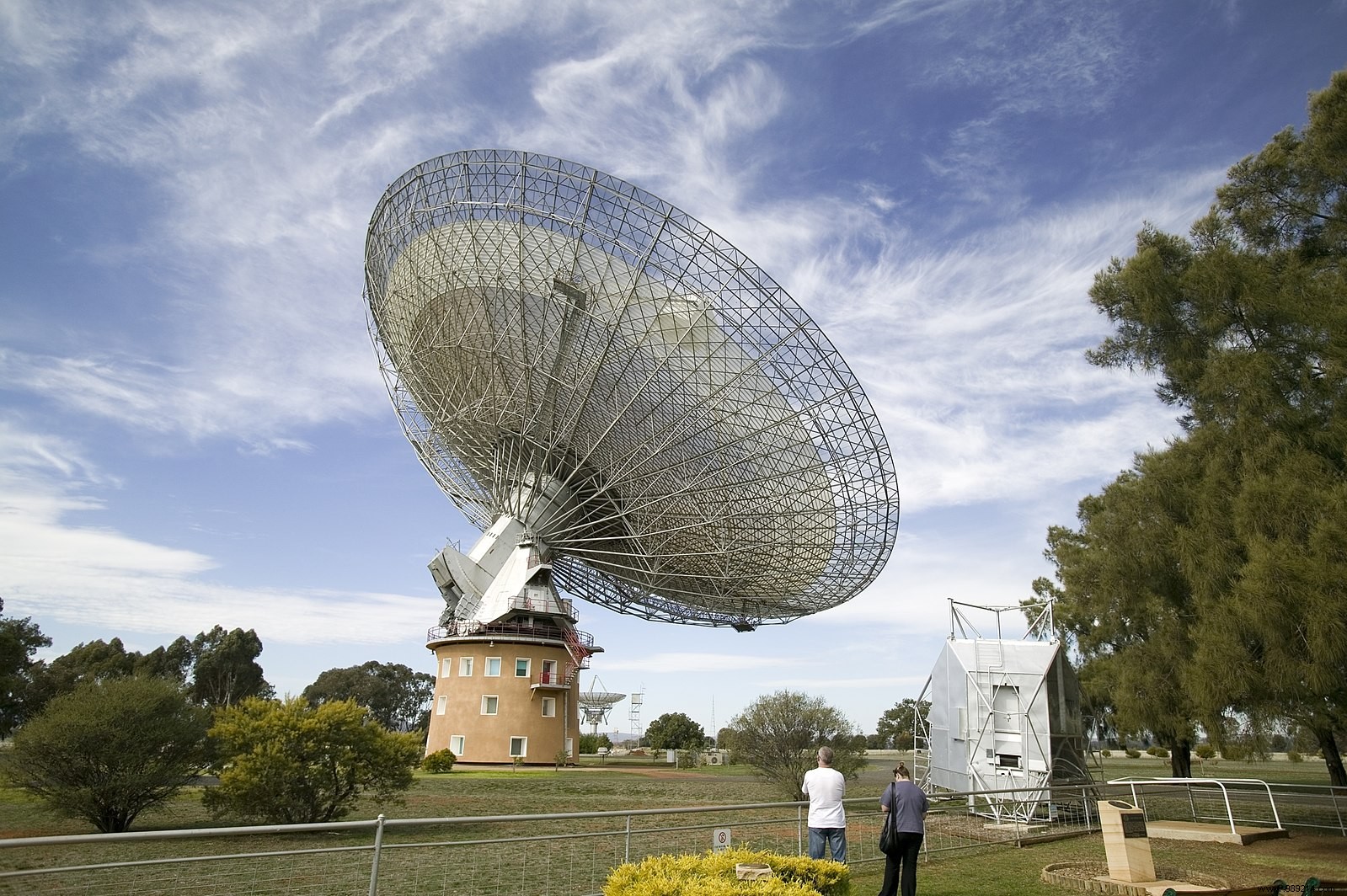Tracking the recent and intriguing radio signal detected by SETI is problematic. And for good reason:it only appeared once, hampering the ability of researchers to precisely isolate its provenance. In the future, it would be ideal if they could rely on several dishes simultaneously.
A few days ago, astronomers announced the detection of an "intriguing radio signal" possibly coming from Proxima Centauri, the closest star system to the sun. The scientific community quickly took an interest in the subject, for several reasons.
Already, this system hosts a Earth-sized rocky planet (Proxima b) evolving in the habitable zone of its star . The astronomers, who relied on the Parkes radio telescope in Australia, also referred to a "narrowband" signal, meaning it only occupied a narrow range of radio frequencies (982 MHz). Now, we know of no natural way to compress electromagnetic energy into a single frequency bin like this. For now, the only source we know of is of technological origin (human-made satellites).
Another point to note, the signal would have "evolved" slightly when observed over several hours. This suggests that it came from a moving planet. Finally, this signal seems, for the moment at least, to have passed the various automated tests aimed at removing any obvious terrestrial interference .
In short, these features are exactly the kind of attributes that the SETI scientists behind this discovery have been looking for for decades. The latter, however, warn that there is still a lot of work to be done, but admit that the interest is justified. “He has [the signal, editor's note]special properties that led it to pass many of our tests, and we can't explain it yet “, explains in particular to Scientific American Andrew Siemion, of the University of California at Berkeley.

While this represents progress in our "search for extraterrestrial life", this mysterious signal dubbed Breakthrough Listen Candidate 1 (or BLC-1) also presents some food for thought on how we do this research according to Michael Garrett, director of the Jodrell Bank Center for Astrophysics at the University of Manchester, in The Conversation .
It should be understood that this signal has been detected only once (in spring 2019). Of course, that doesn't necessarily mean he can't be extraterrestrial in nature. On the other hand, it will unfortunately be very difficult for SETI to conduct the kind of detailed tracking that can fully convince scientists. "Without repeating the signal, skeptics will rightly argue that it is more likely a new form of human-generated radio interference or a rare feature of observational instrumentation complex itself “, writes the astrophysicist.
According to him, one solution would be to abandon the traditional approach to SETI which relies only on simple parabolas . These instruments, like the Australian Parkes Telescope, have the advantage of being able to scan large areas of sky. However, if a candidate signal is detected, then astronomers have no way of precisely isolating its origin. Here, the Parkes telescope was certainly pointing towards Proxima Centauri, but hundreds of thousands of other stars were also present in its field of view. Finally, any of these objects could potentially be the source of the famous signal.

To overcome this problem, the scientist brings up the idea of relying not on one, but on several large parabolas simultaneously, preferably separated by thousands of kilometers . "By combining their signals using a powerful technique known as very long baseline interferometry, we can locate a signal's position with exquisite precision “, he explains. “For nearby systems such as Proxima Centauri, we can achieve an accuracy of around one thousandth of an astronomical unit. This should allow us to identify the planet associated with this signal “.
Another advantage of this approach: the hypothesis of terrestrial radio interference could be ruled out since all these telescopes would be separated by very large distances.
So why not do it? One of the reasons is that the combination of data from such a set of telescopes involves immense human, but especially computer, resources. An observation of a few minutes would indeed generate several terabytes of data (a terabyte is equivalent to 1,024 gigabytes) which would then have to be dissected. Also, SETI is a fairly conservative organization in its approach to extraterrestrial research.
Nevertheless, the situation could soon change. The Breakthrough Listen plans to rely on other instruments, such as the MeerKAT, a radio telescope made up of 64 antennas in the North Cape of South Africa, or even on the Square Kilometer Array (SKA) in their future survey programs.